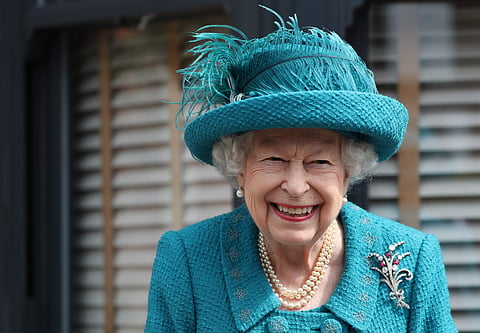
- LIFESTYLE
- FASHION
- FOOD
- ENTERTAINMENT
- EVENTS
- CULTURE
- VIDEOS
- WEB STORIES
- GALLERIES
- GADGETS
- CAR & BIKE
- SOCIETY
- TRAVEL
- NORTH EAST
- INDULGE CONNECT

Queen Elizabeth II, who was the UK’s longest-reigning monarch, passed away on September 8, aged 96 at Balmoral Castle in Scotland. The ruler was on the throne for 70 years, surpassing the previous record held by her great-great-grandmother, Queen Victoria, who reigned for 63 years until 1901.
The late Queen Elizabeth II is also the second longest-ruling monarch in the world. Only one king has ruled for longer: France’s Louis XIV — more than 72 years between 1643 and 1715.
The death of Queen Elizabeth II has triggered a series of carefully structured ceremonial and constitutional steps known as Operation London Bridge, which is Britain’s plan for how to proceed when the Queen passes away.
As Britain undergoes a period of national mourning and heralds the reign of King Charles III, here is a look at what Operation London Bridge entails and will happen in the coming days:
On September 9:
1) British Prime Minister Liz Truss will be informed in coded terms by civil servants, who will say “London Bridge is down” on secure lines.
2) The news will also be sent from the Foreign Office’s Global Response Centre in London to 15 governments outside the UK — where the Queen is also the head of state — and 36 other nations of the Commonwealth for whom she has served as a symbolic figurehead.
3) In Buckingham Palace, a footman in mourning clothes will come out, cross the dull pink gravel and pin a black-edged notice to the gates of the palace.
4) The Buckingham Palace’s website will be changed to a sombre, single page, informing its viewers of the news in a single line on a dark background.
5) Both houses of Parliament will be recalled, people will go home from work early, and airplane pilots will announce the news to their passengers.
6) In the nine days that follow (in the documents involving London Bridge planning, these are known as ‘D-day’, ‘D+1’ and so on), ritual proclamations, a four-nation tour by the new king, redacted television programming, and a diplomatic assembling in London will take place.
7) After the announcement, all government business will come to a halt, and the UK Parliament — as well as its devolved legislatures in Northern Ireland, Scotland, and Wales — will be adjourned.
8) In Whitehall, flags will be hoisted at half mast and the Prime Minister will make a statement and a minute of national silence will be announced.
9) A service of remembrance is expected to take place at St. Paul’s Cathedral in London, with the prime minister and other senior ministers in attendance.
10) On the same day, the plan for the ascension of Prince Charles to the throne — dubbed Operation Spring Tide — will be underway. The Prime Minister will hold an audience with Prince Charles, who will then deliver his first broadcast to the nation.
On September 10:
1) King Charles will meet at St. James’s Palace with a group of senior officials known as the Accession Council and will officially be proclaimed king. An official will read the proclamation aloud from a balcony at St. James’s Palace, while others will do the same in other locations across the UK.
2) Parliament holds the second day of tributes to the queen.
*With inputs from AP
Queen Elizabeth II passes away at 96 in Balmoral after 70-year reign
Meghan Markle and Prince Harry welcome baby girl; name her after Queen Elizabeth and Princess Diana
Buckingham Palace: New outfits designed for Queen Elizabeth II will not use real fur
Why was the late Prince Philip never called a King though his wife is referred to as Queen?